 What’s on my mind this month is how heavily Maryland, with its high concentration of bioscience and federal employees, relies on federal research and development funding. As I contemplated what to share in this issue of SOMnews — recognizing that this would go to press before the White House and Congress had, hopefully, reached an agreement on a budget — I was struck by the potentially ominous consequences of the impending fiscal cliff for the State of Maryland. If the “sequestration” clause of the Budget Control Act of 2011 was allowed to kick in, it would trigger an approximately eight percent across-the-board cut in federal discretionary spending. Although all states would be negatively impacted, perhaps no state in the U.S. would be more adversely affected than Maryland. Indeed, our economy most likely would be pushed into a major recession with long-lasting economic consequences for the state, which stood to lose about $5.4 billion over the next four years in federal research funding under sequestration.
What’s on my mind this month is how heavily Maryland, with its high concentration of bioscience and federal employees, relies on federal research and development funding. As I contemplated what to share in this issue of SOMnews — recognizing that this would go to press before the White House and Congress had, hopefully, reached an agreement on a budget — I was struck by the potentially ominous consequences of the impending fiscal cliff for the State of Maryland. If the “sequestration” clause of the Budget Control Act of 2011 was allowed to kick in, it would trigger an approximately eight percent across-the-board cut in federal discretionary spending. Although all states would be negatively impacted, perhaps no state in the U.S. would be more adversely affected than Maryland. Indeed, our economy most likely would be pushed into a major recession with long-lasting economic consequences for the state, which stood to lose about $5.4 billion over the next four years in federal research funding under sequestration.
According to the Office of Management and Budget (OMB), sequestration would reduce funding for federal research agencies by approximately $3.6 billion in 2013 alone. By far, the single largest cut would have been to the budget of the NIH, which would have lost almost $2.5 billion. A dramatic cut to the NIH budget means, in practical terms, that the University of Maryland School of Medicine and its hospital system and the Johns Hopkins University School of Medicine and its hospital system — two of Maryland’s largest life-science job creators and two of the largest recipients of federal research dollars in Maryland — would be adversely impacted. Many of the ongoing research activities would have been cut short, and new research programs and initiatives delayed or cancelled. More importantly, however, it would curtail their ability to innovate and create spinoff companies.
The U.S. Government’s impact on Maryland’s economy goes far beyond supporting the life-sciences industry. In 2010, for example, federal operations and spending supported an estimated 821,000 jobs in Maryland, or 24 percent of the total jobs in the state. Sequestration would result in $2.5 billion less in health-related spending for businesses and institutions and $2.1 billion less in defense spending from 2013 through 2017. Maryland’s Board of Revenue Estimates projected that sequestration could reduce Maryland’s wage and salary base by about $2.5 billion and reduce employment by more than 12,600 jobs. However, a report from the Center of Regional Analysis at George Mason University more ominously suggested that direct, indirect, and induced job losses could approach 100,000 lost jobs, possibly sending Maryland spiraling into a deep, protracted recession.
Again, hopefully, bipartisanship prevailed, and we have not gone over the cliff. The tenuous budget agreement does not change the fact that our national debt is real, however, or that the economic recovery in the U.S. remains fragile, and the federal government needs to take steps to address it in the long term. It also does not change the fact that the NIH budget has remained almost flat since 2003. Failing to keep pace with inflationary costs, this means that federal research and development funding has been in a decline over the last several years.
Although fiscal responsibility remains of upmost importance, financial austerity cannot extend to our research endeavors. Maryland’s bioscience sector is among the nation’s largest, generating $29 billion in economic output annually, supporting 120,000 total jobs, $11 billion in income, and nearly $600 million in state government taxes annually. In other words, the sector supports nearly five percent of Maryland’s total employment, more than eight percent of its wage/salary income, and over 11 percent of gross state product.
As a top-tier academic medical school, we must continue supporting ongoing programs and new initiatives. We must maintain our leadership role through research, identifying new ways to support our efforts and building collaborations to help stretch our dollars. The life-sciences sector is the one proven powerful economic engine in the State. I am confident that Maryland will remain one of its most crucial driving forces.
In the relentless pursuit of excellence, I am,
E. Albert Reece, MD, PhD, MBA
Vice President for Medical Affairs, University of Maryland
John Z. and Akiko K. Bowers Distinguished Professor and
Dean, University of Maryland School of Medicine
In Memoriam
 We mourned the passing of two members of our community over the holidays: William J. Weiner, MD, professor and chair, Department of Neurology, and Andrew Dunsmore, PhD, assistant dean for Development. Andy Dunsmore, who has been a valued member of the School of Medicine's Office of Devlopment for the last three years, passed away on December 24 at his parents' home in Tennessee. He was 46 years old.
We mourned the passing of two members of our community over the holidays: William J. Weiner, MD, professor and chair, Department of Neurology, and Andrew Dunsmore, PhD, assistant dean for Development. Andy Dunsmore, who has been a valued member of the School of Medicine's Office of Devlopment for the last three years, passed away on December 24 at his parents' home in Tennessee. He was 46 years old.
 Dr. Bill Weiner, a friend and colleague to many of us and a leading researcher and scholar in the experimental therapeutics and clinical phenomenogy of Parkinson's Disease passed away on December 29 at his home here in Baltimore. We are planning to hold memorial events for both individuals to honor and recognize them for their dedication and service to the University of Maryland School of Medicine. Additional details about these events will be shared as they become available.
Dr. Bill Weiner, a friend and colleague to many of us and a leading researcher and scholar in the experimental therapeutics and clinical phenomenogy of Parkinson's Disease passed away on December 29 at his home here in Baltimore. We are planning to hold memorial events for both individuals to honor and recognize them for their dedication and service to the University of Maryland School of Medicine. Additional details about these events will be shared as they become available.
Appointments
 Agnes Azimzadeh, PhD, associate professor, Department of Surgery, has been elected Councilor of the International Xenotransplantation Association for a four-year term (2012–2016).
Agnes Azimzadeh, PhD, associate professor, Department of Surgery, has been elected Councilor of the International Xenotransplantation Association for a four-year term (2012–2016).
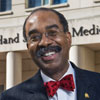 E. Albert Reece, MD, PhD, MBA, Vice President for Medical Affairs, University of Maryland, and the John Z. and Akiko K. Bowers Distinguished Professor and Dean, University of Maryland School of Medicine, has been elected to the Institute of Medicine's governing council for a three-year term beginning January 1, 2013. The IOM is the health arm of the National Academy of Sciences and serves as advisors to the nation in science, engineering and medicine. The IOM Council is the governing body of the organiziation. The School of Medicine has 17 facutly members, including Dean Reece, who are members of the IOM.
E. Albert Reece, MD, PhD, MBA, Vice President for Medical Affairs, University of Maryland, and the John Z. and Akiko K. Bowers Distinguished Professor and Dean, University of Maryland School of Medicine, has been elected to the Institute of Medicine's governing council for a three-year term beginning January 1, 2013. The IOM is the health arm of the National Academy of Sciences and serves as advisors to the nation in science, engineering and medicine. The IOM Council is the governing body of the organiziation. The School of Medicine has 17 facutly members, including Dean Reece, who are members of the IOM.
Events, Lectures & Workshops
 Agnes Azimzadeh, PhD, associate professor, Department of Surgery, presented “Selective Blockade of CD28 in Transplantation” at the American Society of Transplantation (AST) Guest Society Symposium at the American Association of Immunologists (AAI)’s Immunology 2012 meeting in Boston, and presented “Lung Xenogenic Injury: Does Anticoagulation Help?” at the 15th Minisymposium of the German Working Group in Xenotransplantation in Berlin, Germany in July 2012.
Agnes Azimzadeh, PhD, associate professor, Department of Surgery, presented “Selective Blockade of CD28 in Transplantation” at the American Society of Transplantation (AST) Guest Society Symposium at the American Association of Immunologists (AAI)’s Immunology 2012 meeting in Boston, and presented “Lung Xenogenic Injury: Does Anticoagulation Help?” at the 15th Minisymposium of the German Working Group in Xenotransplantation in Berlin, Germany in July 2012.
 Homayara Aziz, MD, instructor, Department of Obstetrical, Gynecological & Reproductive Sciences, was invited by the American Association of Gynecologic Laparoscopists (AAGL) to present on “A Simple Technique in Laparoscopic Port Closure: Fast Learning by the Surgeon, Access to Instrumentation, Low Cost and Short Operating Time” at the 41st Global Congress on Minimally Invasive Gynecology, held November 5–9, 2012 in Las Vegas. She discussed her technique, which uses only two S-retractors and closes the laparoscopic port site > 8mm under direct visualization using a two-step process. S-retractors are standard, available, inexpensive instruments in the operating room. The S-retractor also allows a quick way to assess the length and depth of the port site. Her technique has been used in over 100 patients over three years. No bowel injury or port-site hernias have been reported during a mean follow-up of six weeks post-op and a 12-month annual follow-up. This technique was devised to be reasonable, free of complications, and used by an average gynecologist and surgeon during laparoscopic surgery.
Homayara Aziz, MD, instructor, Department of Obstetrical, Gynecological & Reproductive Sciences, was invited by the American Association of Gynecologic Laparoscopists (AAGL) to present on “A Simple Technique in Laparoscopic Port Closure: Fast Learning by the Surgeon, Access to Instrumentation, Low Cost and Short Operating Time” at the 41st Global Congress on Minimally Invasive Gynecology, held November 5–9, 2012 in Las Vegas. She discussed her technique, which uses only two S-retractors and closes the laparoscopic port site > 8mm under direct visualization using a two-step process. S-retractors are standard, available, inexpensive instruments in the operating room. The S-retractor also allows a quick way to assess the length and depth of the port site. Her technique has been used in over 100 patients over three years. No bowel injury or port-site hernias have been reported during a mean follow-up of six weeks post-op and a 12-month annual follow-up. This technique was devised to be reasonable, free of complications, and used by an average gynecologist and surgeon during laparoscopic surgery.
 Maureen Black, PhD, the John A. Scholl, MD and Mary Louise Scholl, MD, Professor, Department of Pediatrics, presented “Healthy Toddlers/Healthy Teens: Obesity Prevention” at the American Psychological Association and Association of Black Psychologists Obesity Summit in Washington, DC, on October 23, 2012. She also presented “Integrating Interventions for Child Development and Nutrition” at the Department of Nutrition within the University of North Carolina School of Public Health in Chapel Hill, NC, on November 6, 2012.
Maureen Black, PhD, the John A. Scholl, MD and Mary Louise Scholl, MD, Professor, Department of Pediatrics, presented “Healthy Toddlers/Healthy Teens: Obesity Prevention” at the American Psychological Association and Association of Black Psychologists Obesity Summit in Washington, DC, on October 23, 2012. She also presented “Integrating Interventions for Child Development and Nutrition” at the Department of Nutrition within the University of North Carolina School of Public Health in Chapel Hill, NC, on November 6, 2012.
 Mordecai Blaustein, MD, professor, Departments of Physiology & Medicine, presented “Role of Endogenous Ouabain in Salt-Sensitive Hypertension” at a workshop on “Unifying Theories of Hypertension: Past, Present and Emerging” in September 2012 in Washington, DC.
Mordecai Blaustein, MD, professor, Departments of Physiology & Medicine, presented “Role of Endogenous Ouabain in Salt-Sensitive Hypertension” at a workshop on “Unifying Theories of Hypertension: Past, Present and Emerging” in September 2012 in Washington, DC.
 Clarissa Diamantidis, MD, MHS, assistant professor, Department of Medicine, moderated a clinical science symposium entitled “Health Information Technology: To Improve Clinical Outcomes and Reduce Medication Errors?” at the annual American Society of Nephrology meeting in San Diego, CA. Dr. Diamantidis also gave an invited lecture on “Clinical Implications of Health Information Technology” during the session.
Clarissa Diamantidis, MD, MHS, assistant professor, Department of Medicine, moderated a clinical science symposium entitled “Health Information Technology: To Improve Clinical Outcomes and Reduce Medication Errors?” at the annual American Society of Nephrology meeting in San Diego, CA. Dr. Diamantidis also gave an invited lecture on “Clinical Implications of Health Information Technology” during the session.
 Richard Eckert, PhD, professor and chair, Department of Biochemistry & Molecular Biology, was part of a delegation from the American Society for Biochemistry & Molecular Biology (ASBMB) that visited the White House in September 2012 to meet with Dr. John Holdren, President Obama’s Advisor for Science and Technology and Director of the Office of Science and Technology Policy. Dr. Eckert is chair of the Legislative Issues Subcommittee of the ASBMB Political Affairs Advisory Committee. The topic of the meeting was sustaining government support for biomedical research through the National Institutes of Health (NIH).
Richard Eckert, PhD, professor and chair, Department of Biochemistry & Molecular Biology, was part of a delegation from the American Society for Biochemistry & Molecular Biology (ASBMB) that visited the White House in September 2012 to meet with Dr. John Holdren, President Obama’s Advisor for Science and Technology and Director of the Office of Science and Technology Policy. Dr. Eckert is chair of the Legislative Issues Subcommittee of the ASBMB Political Affairs Advisory Committee. The topic of the meeting was sustaining government support for biomedical research through the National Institutes of Health (NIH).
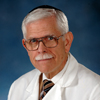 Robert Edelman, MD, clinical professor, Department of Medicine and Center for Vaccine Development, presented an invited lecture and seminar on “IRB Oversight of Vaccine Trials” to the Division of Vaccines & Related Product Applications in the Center for Biologics Evaluation & Research at the Food and Drug Administration in Rockville, MD, on September 11, 2012.
Robert Edelman, MD, clinical professor, Department of Medicine and Center for Vaccine Development, presented an invited lecture and seminar on “IRB Oversight of Vaccine Trials” to the Division of Vaccines & Related Product Applications in the Center for Biologics Evaluation & Research at the Food and Drug Administration in Rockville, MD, on September 11, 2012.
 Gary Fiskum, PhD, the M. Jane Matjasko Professor for Research and vice-chair for Research in the Department of Anesthesiology, presented “Stimulation of Neuronal Respiration by Neuroprotective Alternative Biofuels” at the annual meeting of the National Neurotrauma Society held in Phoenix, AZ, in July 2012; presented “Underbody Blast-Induced Hyperacceleration Induces Mild Traumatic Brain Injury Associated with Diffuse Axonal Injury, Inflammation, and Vascular Permeability” at the Military Health System Research Symposium held in Ft. Lauderdale, FL, in August; and organized the Second Annual University of Maryland/Johns Hopkins University Mitochondrial Research Retreat, held on October 6 at the University of Maryland School of Medicine. The symposium was attended by approximately 60 persons representing both universities, as well as NIH, the National Institute on Aging at Bayview, and the University of Maryland College Park. School of Medicine speakers included William Regenold, MD, CM, associate professor, Department of Psychiatry, and Rosemary Schuh, PhD, assistant professor, Department of Neurology.
Gary Fiskum, PhD, the M. Jane Matjasko Professor for Research and vice-chair for Research in the Department of Anesthesiology, presented “Stimulation of Neuronal Respiration by Neuroprotective Alternative Biofuels” at the annual meeting of the National Neurotrauma Society held in Phoenix, AZ, in July 2012; presented “Underbody Blast-Induced Hyperacceleration Induces Mild Traumatic Brain Injury Associated with Diffuse Axonal Injury, Inflammation, and Vascular Permeability” at the Military Health System Research Symposium held in Ft. Lauderdale, FL, in August; and organized the Second Annual University of Maryland/Johns Hopkins University Mitochondrial Research Retreat, held on October 6 at the University of Maryland School of Medicine. The symposium was attended by approximately 60 persons representing both universities, as well as NIH, the National Institute on Aging at Bayview, and the University of Maryland College Park. School of Medicine speakers included William Regenold, MD, CM, associate professor, Department of Psychiatry, and Rosemary Schuh, PhD, assistant professor, Department of Neurology.
 Rao Gullapalli, PhD, associate professor, Department of Diagnostic Radiology & Nuclear Medicine, hosted the first Maryland NeuroImaging Retreat on November 12 at the SMC Campus Center. More than 170 participants attended this meeting of Baltimore-Washington area functional neuroimaging researchers, students, and post-docs.
Rao Gullapalli, PhD, associate professor, Department of Diagnostic Radiology & Nuclear Medicine, hosted the first Maryland NeuroImaging Retreat on November 12 at the SMC Campus Center. More than 170 participants attended this meeting of Baltimore-Washington area functional neuroimaging researchers, students, and post-docs.
 Richard Lichenstein, MD, FAAP, professor, Department of Pediatrics, co-presented “Seasonal Influenza Vaccination of Asthmatic Patients in the Pediatric Emergency Department: Which Patients Are Less Likely to Accept the Vaccine?” at the 2012 American Academy of Pediatrics National Conference and Exhibition in New Orleans, LA, on October 19, 2012. At the same conference, he was also a presenter for “The Top 10 Articles in Injury Prevention for 2012” on October 22.
Richard Lichenstein, MD, FAAP, professor, Department of Pediatrics, co-presented “Seasonal Influenza Vaccination of Asthmatic Patients in the Pediatric Emergency Department: Which Patients Are Less Likely to Accept the Vaccine?” at the 2012 American Academy of Pediatrics National Conference and Exhibition in New Orleans, LA, on October 19, 2012. At the same conference, he was also a presenter for “The Top 10 Articles in Injury Prevention for 2012” on October 22.
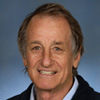 Frank Robb, PhD, professor (pictured), and Joel Graham, PhD, postdoctoral fellow, both from the Department of Microbiology & Immunology, have been invited to speak at the Science Fiction and Fantasy Convention “Balticon 47” from May 24–27, 2013.
Frank Robb, PhD, professor (pictured), and Joel Graham, PhD, postdoctoral fellow, both from the Department of Microbiology & Immunology, have been invited to speak at the Science Fiction and Fantasy Convention “Balticon 47” from May 24–27, 2013.
 Joseph Stains, PhD, assistant professor, Department of Orthopaedics, presented “The Inositol Polyphos-phate/Protein Kinase C-delta Signaling Cascade Is Required for the Connexin43-dependent Amplification of Runx2 Activity” at the 2012 Annual Meeting of the American Society for Bone and Mineral Research in Minneapolis, MN, in October 2012.
Joseph Stains, PhD, assistant professor, Department of Orthopaedics, presented “The Inositol Polyphos-phate/Protein Kinase C-delta Signaling Cascade Is Required for the Connexin43-dependent Amplification of Runx2 Activity” at the 2012 Annual Meeting of the American Society for Bone and Mineral Research in Minneapolis, MN, in October 2012.
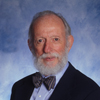 John Talbott, MD, professor, Department of Psychiatry, was invited to conduct a course in “Writing for American Journals” at the 11th World Congress of the World Association for Psychosocial Rehabilitation in Milan, Italy, on November 12, 2012. Dr Talbott is Editor-in-Chief of the Journal of Nervous and Mental Disease, the world’s oldest independent scientific monthly in the field of human behavior. Joining him was Howard Goldman, MD, PhD, professor, Department of Psychiatry, and editor of Psychiatric Services, one of two journals published by the American Psychiatric Association.
John Talbott, MD, professor, Department of Psychiatry, was invited to conduct a course in “Writing for American Journals” at the 11th World Congress of the World Association for Psychosocial Rehabilitation in Milan, Italy, on November 12, 2012. Dr Talbott is Editor-in-Chief of the Journal of Nervous and Mental Disease, the world’s oldest independent scientific monthly in the field of human behavior. Joining him was Howard Goldman, MD, PhD, professor, Department of Psychiatry, and editor of Psychiatric Services, one of two journals published by the American Psychiatric Association.
 More than 40 members of the Department of Diagnostic Radiology & Nuclear Medicine, including faculty, fellows, residents and staff, served as presenters, authors or moderators for more than 50 scientific and educational sessions at the annual meeting of the Radiological Society of North America, held in Chicago from November 25–29, 2012.
More than 40 members of the Department of Diagnostic Radiology & Nuclear Medicine, including faculty, fellows, residents and staff, served as presenters, authors or moderators for more than 50 scientific and educational sessions at the annual meeting of the Radiological Society of North America, held in Chicago from November 25–29, 2012.
Grants & Contracts
 Agnes Azimzadeh, PhD, associate professor, Department of Surgery, received a two-year, $250,000 Opportunities Pool Award from the National Institute of Allergy and Infectious Diseases (NIAID) for “Fc Receptor Targeting for Kidney Allograft Tolerance in Sensitized Recipients.”
Agnes Azimzadeh, PhD, associate professor, Department of Surgery, received a two-year, $250,000 Opportunities Pool Award from the National Institute of Allergy and Infectious Diseases (NIAID) for “Fc Receptor Targeting for Kidney Allograft Tolerance in Sensitized Recipients.”
 Curt Civin, MD, professor, Departments of Pediatrics and Physiology, associate dean for Research, and director of the Center for Stem Cell Biology & Regenerative Medicine, was awarded two one-year, $75,000 grants from GPB Scientific, LLC, one for “High Efficiency Microfluidic Purification of Stem Cells to Improve Transplants” and the other for “Microfluidic Processing of Leukocytes for Molecular Diagnostic Testing.”
Curt Civin, MD, professor, Departments of Pediatrics and Physiology, associate dean for Research, and director of the Center for Stem Cell Biology & Regenerative Medicine, was awarded two one-year, $75,000 grants from GPB Scientific, LLC, one for “High Efficiency Microfluidic Purification of Stem Cells to Improve Transplants” and the other for “Microfluidic Processing of Leukocytes for Molecular Diagnostic Testing.”
 Howard Dubowitz, MB, ChB, professor, Department of Pediatrics, was awarded a one-year, $42,193 grant from the Maryland Governor’s Office of Crime Control and Prevention for “CHAMP [Child Abuse Medical Professionals] Child Maltreatment Training of Law Enforcement in Maryland.” He was also awarded a one-year, $178,438 grant from the same office (under the auspices of the Victims of Crime Act) for “Child Victims of Violence.” Additionally, the National Institute of Drug Abuse (NIDA) awarded him a five-year, $3,131,894 grant for “Drug Use Trajectories and the Transition to Adulthood Among Maltreated Youth.” Dr. Dubowitz is the PI on all three grants.
Howard Dubowitz, MB, ChB, professor, Department of Pediatrics, was awarded a one-year, $42,193 grant from the Maryland Governor’s Office of Crime Control and Prevention for “CHAMP [Child Abuse Medical Professionals] Child Maltreatment Training of Law Enforcement in Maryland.” He was also awarded a one-year, $178,438 grant from the same office (under the auspices of the Victims of Crime Act) for “Child Victims of Violence.” Additionally, the National Institute of Drug Abuse (NIDA) awarded him a five-year, $3,131,894 grant for “Drug Use Trajectories and the Transition to Adulthood Among Maltreated Youth.” Dr. Dubowitz is the PI on all three grants.
 Alan Faden, MD, the David S. Brown Professor in Trauma in the Department of Anesthesiology, and director of the Center for Shock, Trauma and Anesthesiology Research (STAR) & the National Study Center for Shock and EMS, was awarded a $2,391,540, multi-PI P30 grant from NIH with Susan Dorsey, PhD, RN, from the University of Maryland School of Nursing and Joel Greenspan, PhD, from the University of Maryland School of Dentistry to establish a Center for the Genomics of Pain.
Alan Faden, MD, the David S. Brown Professor in Trauma in the Department of Anesthesiology, and director of the Center for Shock, Trauma and Anesthesiology Research (STAR) & the National Study Center for Shock and EMS, was awarded a $2,391,540, multi-PI P30 grant from NIH with Susan Dorsey, PhD, RN, from the University of Maryland School of Nursing and Joel Greenspan, PhD, from the University of Maryland School of Dentistry to establish a Center for the Genomics of Pain.
 Gary Fiskum, PhD, the M. Jane Matjasko Professor for Research and vice-chair for research, Department of Anesthesiology, was awarded a $1,530,768 grant from the Department of Defense for “Underbody Blast Models of Traumatic Brain Injury Caused by Hyperacceleration of Secondary Head Impact.”
Gary Fiskum, PhD, the M. Jane Matjasko Professor for Research and vice-chair for research, Department of Anesthesiology, was awarded a $1,530,768 grant from the Department of Defense for “Underbody Blast Models of Traumatic Brain Injury Caused by Hyperacceleration of Secondary Head Impact.”
 Zhenqiu Liu, PhD, associate professor, Department of Epidemiology & Public Health, received a three-year, $283,703 award from the National Science Foundation for “Collaborative Research: ATD: Statistical and Computational Methods for the Analysis of Metagenomic Count Data.”
Zhenqiu Liu, PhD, associate professor, Department of Epidemiology & Public Health, received a three-year, $283,703 award from the National Science Foundation for “Collaborative Research: ATD: Statistical and Computational Methods for the Analysis of Metagenomic Count Data.”
 Andrew Neuwald, PhD, professor, Department of Biochemistry & Molecular Biology, received a one-year, $291,279 (direct & indirect) award from the National Center for Biotechnology Information (NCBI) to automate and enhance their protein conserved domain database pipeline.
Andrew Neuwald, PhD, professor, Department of Biochemistry & Molecular Biology, received a one-year, $291,279 (direct & indirect) award from the National Center for Biotechnology Information (NCBI) to automate and enhance their protein conserved domain database pipeline.
 Joseph Stains, PhD (pictured), and Eugene Koh, MD, PhD, both assistant professors, Department of Orthopaedics, have been awarded a two-year, $229,412 grant from the Maryland Technology Development Corporation (TEDCO) for “Using Gap Junctions to Enhance Stem Cell Therapies in Osteoarthritis.” Dr. Stains will serve as the PI on this project, and Dr. Koh will be the Co-PI.
Joseph Stains, PhD (pictured), and Eugene Koh, MD, PhD, both assistant professors, Department of Orthopaedics, have been awarded a two-year, $229,412 grant from the Maryland Technology Development Corporation (TEDCO) for “Using Gap Junctions to Enhance Stem Cell Therapies in Osteoarthritis.” Dr. Stains will serve as the PI on this project, and Dr. Koh will be the Co-PI.
Honors & Awards
 Samuel Galvagno, DO, PhD, assistant professor, Department of Anesthesiology, was promoted to Lieutenant Colonel in the United States Air Force Reserve in August 2012. He currently serves as the Director of Critical Care Air Transport Team Operations (CCATT) at the 943rd Rescue Group, 943rd Aerospace Medicine Squadron, Davis-Monthan Air Force Base in Arizona. Additionally, Dr. Galvagno has received a research award from the Society of Critical Care Medicine for “Look What the CCATT Brought In: Epidemiology of USAF Critical Care Air Transport Team Operations in Contemporary Warfare,” which he will present at this month’s Annual Congress for the Society of Critical Care Medicine in San Juan, PR.
Samuel Galvagno, DO, PhD, assistant professor, Department of Anesthesiology, was promoted to Lieutenant Colonel in the United States Air Force Reserve in August 2012. He currently serves as the Director of Critical Care Air Transport Team Operations (CCATT) at the 943rd Rescue Group, 943rd Aerospace Medicine Squadron, Davis-Monthan Air Force Base in Arizona. Additionally, Dr. Galvagno has received a research award from the Society of Critical Care Medicine for “Look What the CCATT Brought In: Epidemiology of USAF Critical Care Air Transport Team Operations in Contemporary Warfare,” which he will present at this month’s Annual Congress for the Society of Critical Care Medicine in San Juan, PR.
 William Olmsted, MD, clinical professor, Department of Diagnostic Radiology & Nuclear Medicine, received the Gold Medal of the Radiological Society of North America (RSNA) on November 26 at the society’s plenary session. Dr. Olmsted was recognized for his contributions to diagnostic imaging and his long-time service as editor of the journal RadioGraphics. The RSNA has also renamed its editorial fellowship program in his honor, and future fellows will be awarded the RSNA William W. Olmsted Editorial Fellowship for Trainees. “Dr. Olmsted has played a vital leadership role in education at the RSNA for 23 years,” says 2012 RSNA President George S. Bisset, III, MD. “His contributions to our entire educational program, in addition to his critical role as editor of RadioGraphics, established a sturdy foundation upon which we can build. Dr. Olmsted will undoubtedly have a lasting effect on our Society and, from a personal perspective, personifies our Gold Medal award.”
William Olmsted, MD, clinical professor, Department of Diagnostic Radiology & Nuclear Medicine, received the Gold Medal of the Radiological Society of North America (RSNA) on November 26 at the society’s plenary session. Dr. Olmsted was recognized for his contributions to diagnostic imaging and his long-time service as editor of the journal RadioGraphics. The RSNA has also renamed its editorial fellowship program in his honor, and future fellows will be awarded the RSNA William W. Olmsted Editorial Fellowship for Trainees. “Dr. Olmsted has played a vital leadership role in education at the RSNA for 23 years,” says 2012 RSNA President George S. Bisset, III, MD. “His contributions to our entire educational program, in addition to his critical role as editor of RadioGraphics, established a sturdy foundation upon which we can build. Dr. Olmsted will undoubtedly have a lasting effect on our Society and, from a personal perspective, personifies our Gold Medal award.”
In the News
 Robert Edelman, MD, clinical professor, Department of Medicine and Center for Vaccine Development, was quoted in the The New York Times Health Section article “In a Setback, Sanofi’s Dengue Fever Vaccine Falls Short of Its Goal” on September 11, 2012.
Robert Edelman, MD, clinical professor, Department of Medicine and Center for Vaccine Development, was quoted in the The New York Times Health Section article “In a Setback, Sanofi’s Dengue Fever Vaccine Falls Short of Its Goal” on September 11, 2012.
 H. Ronald Zielke, PhD, professor, Department of Pediatrics, was featured in the article “Mind Over Matter” in the November 2012 issue of Baltimore Magazine. The article focused on the role of the NICHD Brain and Tissue Bank for Developmental Disorders at the University of Maryland School of Medicine in autism and ALS research.
H. Ronald Zielke, PhD, professor, Department of Pediatrics, was featured in the article “Mind Over Matter” in the November 2012 issue of Baltimore Magazine. The article focused on the role of the NICHD Brain and Tissue Bank for Developmental Disorders at the University of Maryland School of Medicine in autism and ALS research.
New Staff
 Vanessa Carroll joined the School of Medicine’s Office of Development on November 19, 2012, as Director of Special Projects for the Dean’s Office and the Office of Development. Ms. Carroll comes with an extensive background in services marketing, strategic partnership development, and community relationship management. Most recently she served as Vice President of Institutional Advancement, Marketing and Research at Baltimore City Community College (BCCC), and in this role she helped to open the BCCC Life Sciences Institute at the University of Maryland BioPark. Prior to her work with BCCC, she led strategic outreach and partnership initiatives in Southeast Asia, Africa and Latin America, working with the Population Information Program of the Johns Hopkins Bloomberg School of Public Health Center for Communication Programs. Ms. Carroll earned a Master of Administrative Sciences degree (now the MBA) from Johns Hopkins University.
Vanessa Carroll joined the School of Medicine’s Office of Development on November 19, 2012, as Director of Special Projects for the Dean’s Office and the Office of Development. Ms. Carroll comes with an extensive background in services marketing, strategic partnership development, and community relationship management. Most recently she served as Vice President of Institutional Advancement, Marketing and Research at Baltimore City Community College (BCCC), and in this role she helped to open the BCCC Life Sciences Institute at the University of Maryland BioPark. Prior to her work with BCCC, she led strategic outreach and partnership initiatives in Southeast Asia, Africa and Latin America, working with the Population Information Program of the Johns Hopkins Bloomberg School of Public Health Center for Communication Programs. Ms. Carroll earned a Master of Administrative Sciences degree (now the MBA) from Johns Hopkins University.
 Kevin Enright joined the School of Medicine’s Office of Development on November 12, 2012, as Executive Director of Strategic Initiatives. Mr. Enright comes to this role with extensive experience in communications and management, most recently holding the position of Director of Communications and senior advisor for Howard County Executive Ken Ulman. He previously served in senior positions with the Office of Maryland Attorney General J. Joseph Curran, Jr.; the Office of the Baltimore Police Commissioner; and as a reporter and producer for WUSA-TV and WFMY-TV. Mr. Enright is a graduate of University of Maryland, College Park.
Kevin Enright joined the School of Medicine’s Office of Development on November 12, 2012, as Executive Director of Strategic Initiatives. Mr. Enright comes to this role with extensive experience in communications and management, most recently holding the position of Director of Communications and senior advisor for Howard County Executive Ken Ulman. He previously served in senior positions with the Office of Maryland Attorney General J. Joseph Curran, Jr.; the Office of the Baltimore Police Commissioner; and as a reporter and producer for WUSA-TV and WFMY-TV. Mr. Enright is a graduate of University of Maryland, College Park.
Publications
 Charles Chaffin, PhD, associate professor, Department of Obstetrics, Gynecology & Reproductive Sciences, was among the co-authors on “Rhesus Monkey Cumulus Cells Revert to a Mural Granulosa Cell State After an Ovulatory Stimulus” in Endocrinology, 2012 Nov;153(11):5535-45.
Charles Chaffin, PhD, associate professor, Department of Obstetrics, Gynecology & Reproductive Sciences, was among the co-authors on “Rhesus Monkey Cumulus Cells Revert to a Mural Granulosa Cell State After an Ovulatory Stimulus” in Endocrinology, 2012 Nov;153(11):5535-45.
 Wengen Chen, MD, PhD, assistant professor, Department of Diagnostic Radiology & Nuclear Medicine, was the first author on “Comparison of FDG-PET, MRI and CT for Post Radiofrequency Ablation Evaluation of Hepatic Tumors,” in the Annals of Nuclear Medicine, 2012 Oct 11 [Epub ahead of print].
Wengen Chen, MD, PhD, assistant professor, Department of Diagnostic Radiology & Nuclear Medicine, was the first author on “Comparison of FDG-PET, MRI and CT for Post Radiofrequency Ablation Evaluation of Hepatic Tumors,” in the Annals of Nuclear Medicine, 2012 Oct 11 [Epub ahead of print].
 Richard Colgan, MD, associate professor and vice chair of Medical Student Education in the Department of Family & Community Medicine, had the second edition of his book Advice to the Healer: On the Art of Caring published by Springer Publishing on November 30, 2012.
Richard Colgan, MD, associate professor and vice chair of Medical Student Education in the Department of Family & Community Medicine, had the second edition of his book Advice to the Healer: On the Art of Caring published by Springer Publishing on November 30, 2012.
 Curt Civin, MD, professor, Departments of Pediatrics and Physiology, associate dean for Research and director of the Center for Stem Cell Biology & Regenerative Medicine, was among the co-authors on “Generation and Genetic Engineering of Human Induced Pluripotent Stem Cells Using Designed Zinc Finger Nucleases” in Stem Cells and Development, 2012 Oct 19 [Epub ahead of print].
Curt Civin, MD, professor, Departments of Pediatrics and Physiology, associate dean for Research and director of the Center for Stem Cell Biology & Regenerative Medicine, was among the co-authors on “Generation and Genetic Engineering of Human Induced Pluripotent Stem Cells Using Designed Zinc Finger Nucleases” in Stem Cells and Development, 2012 Oct 19 [Epub ahead of print].
 Shiladitya DasSarma, PhD, professor, Department of Microbiology & Immunology, and members of his lab, including Priya DasSarma, Regie Zamora and Jochen Muller, published “Genome-Wide Responses of the Model Archaeon Halobacterium sp. Strain NRC-1 to Oxygen Limitation” in the Journal of Bacteriology, 2012, Oct;(194)20:5530-5537. The article was featured on the cover.
Shiladitya DasSarma, PhD, professor, Department of Microbiology & Immunology, and members of his lab, including Priya DasSarma, Regie Zamora and Jochen Muller, published “Genome-Wide Responses of the Model Archaeon Halobacterium sp. Strain NRC-1 to Oxygen Limitation” in the Journal of Bacteriology, 2012, Oct;(194)20:5530-5537. The article was featured on the cover.
 Clarissa Diamantidis, MD, MHS, assistant professor, and Jeffrey Fink, MD, MS, professor, Department of Medicine, were among the co-authors on “Usability of a CKD Educational Website Targeted to Patients and Their Family Members” in the Clinical Journal of the American Society of Nephrology, 2012 Oct; 7(10): 1553-1560.
Clarissa Diamantidis, MD, MHS, assistant professor, and Jeffrey Fink, MD, MS, professor, Department of Medicine, were among the co-authors on “Usability of a CKD Educational Website Targeted to Patients and Their Family Members” in the Clinical Journal of the American Society of Nephrology, 2012 Oct; 7(10): 1553-1560.
 Alan Faden, MD, the David S. Brown Professor in Trauma and director of the Center for Shock, Trauma & Anesthesiology Research (STAR) and the National Study Center for Shock & EMS; David Loane, PhD, assistant professor and Bogdan Stoica, MD, assistant professor, all from the Department of Anesthesiology, were among the co-authors on “Comparing the Predictive Value of Multiple Cognitive, Affective, and Motor Tasks After Rodent Traumatic Brain Injury” in the Journal of Neurotrauma, 2012 Oct 10;29(15):2475-89. Drs. Faden and Stoica were also among the co-authors on “Overexpression of HSP70 Attenuates Caspase-Dependent and Caspase-Independent Pathways and Inhibits Neuronal Apoptosis” in the Journal of Neurochemistry, 2012 Nov;123(4):542-54; and “Characterization of Inflammatory Gene Expression and Galectin-3 Function After Spinal Cord Injury in Mice” in Brain Research, 2012 Sep 26;1475:96-105. Drs. Faden and Stoica and Junfang Wu, BM, PhD, assistant professor, were among the authors on “Inhibition of E2F1/CDK1 Pathway Attenuates Neuronal Apoptosis in Vitro and Confers Neuroprotection After Spinal Cord Injury in Vivo” in PLoS One, 2012 Jul 25;7(7):e42129 [Epub ahead of print]; and “Delayed Expression of Cell Cycle Proteins Contributes to Astroglial Scar Formation and Chronic Inflammation After Rat Spinal Cord Contusion” in the Journal of Neuroinflammation, 2012 Jul 11;9:169.
Alan Faden, MD, the David S. Brown Professor in Trauma and director of the Center for Shock, Trauma & Anesthesiology Research (STAR) and the National Study Center for Shock & EMS; David Loane, PhD, assistant professor and Bogdan Stoica, MD, assistant professor, all from the Department of Anesthesiology, were among the co-authors on “Comparing the Predictive Value of Multiple Cognitive, Affective, and Motor Tasks After Rodent Traumatic Brain Injury” in the Journal of Neurotrauma, 2012 Oct 10;29(15):2475-89. Drs. Faden and Stoica were also among the co-authors on “Overexpression of HSP70 Attenuates Caspase-Dependent and Caspase-Independent Pathways and Inhibits Neuronal Apoptosis” in the Journal of Neurochemistry, 2012 Nov;123(4):542-54; and “Characterization of Inflammatory Gene Expression and Galectin-3 Function After Spinal Cord Injury in Mice” in Brain Research, 2012 Sep 26;1475:96-105. Drs. Faden and Stoica and Junfang Wu, BM, PhD, assistant professor, were among the authors on “Inhibition of E2F1/CDK1 Pathway Attenuates Neuronal Apoptosis in Vitro and Confers Neuroprotection After Spinal Cord Injury in Vivo” in PLoS One, 2012 Jul 25;7(7):e42129 [Epub ahead of print]; and “Delayed Expression of Cell Cycle Proteins Contributes to Astroglial Scar Formation and Chronic Inflammation After Rat Spinal Cord Contusion” in the Journal of Neuroinflammation, 2012 Jul 11;9:169.
 Dheeraj Gandhi, MD, professor, Department of Diagnostic Radiology & Nuclear Medicine, was among the co-authors on “Advanced Modality Imaging Evaluation in Acute Ischemic Stroke May Lead to Delayed Endovascular Reperfusion Therapy Without Improvement in Clinical Outcomes” in the Journal of Neurointerventional Surgery, 2012 Oct 16 [Epub ahead of print].
Dheeraj Gandhi, MD, professor, Department of Diagnostic Radiology & Nuclear Medicine, was among the co-authors on “Advanced Modality Imaging Evaluation in Acute Ischemic Stroke May Lead to Delayed Endovascular Reperfusion Therapy Without Improvement in Clinical Outcomes” in the Journal of Neurointerventional Surgery, 2012 Oct 16 [Epub ahead of print].
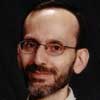 Michael Grasso, MD, PhD, FACP, assistant professor, Departments of Medicine and Emergency Medicine, was a co-author on “Finding Associations Among SNPs for Prostate Cancer Using Collaborative Filtering” in Proceedings of the ACM Sixth International Workshop on Data and Text Mining in Biomedical Informatics (DTMBIO 2012).
Michael Grasso, MD, PhD, FACP, assistant professor, Departments of Medicine and Emergency Medicine, was a co-author on “Finding Associations Among SNPs for Prostate Cancer Using Collaborative Filtering” in Proceedings of the ACM Sixth International Workshop on Data and Text Mining in Biomedical Informatics (DTMBIO 2012).
 Rao Gullapalli, PhD, associate professor, and Su Xu, PhD, assistant professor, both from the Department of Diagnostic Radiology & Nuclear Medicine, were among the co-authors on “Thalamocortical Asynchrony in Conditions of Spinal Cord Injury Pain in Rats” in the Journal of Neuroscience, 2012 Nov 7;32(45):15843-8. Dr. Gullapalli was also among the co-authors on “Evaluation of Partial K-Space Strategies to Speed up Time-Domain EPR Imaging” in Magnetic Resonance Medicine, 2012 Oct 8 [Epub ahead of print].
Rao Gullapalli, PhD, associate professor, and Su Xu, PhD, assistant professor, both from the Department of Diagnostic Radiology & Nuclear Medicine, were among the co-authors on “Thalamocortical Asynchrony in Conditions of Spinal Cord Injury Pain in Rats” in the Journal of Neuroscience, 2012 Nov 7;32(45):15843-8. Dr. Gullapalli was also among the co-authors on “Evaluation of Partial K-Space Strategies to Speed up Time-Domain EPR Imaging” in Magnetic Resonance Medicine, 2012 Oct 8 [Epub ahead of print].
 Thomas Hornyak, MD, PhD, associate professor, Departments of Dermatology and Biochemistry & Molecular Biology, published a paper entitled “Hearing Dysfunction in Heterozygous Mitfmi-wh/+Mice, A Model for Waardenburg SyndromeType 2 and Tietz Syndrome” in Pigment Cell and Melanoma Research, 2012, Nov 16 [Epub before print].
Thomas Hornyak, MD, PhD, associate professor, Departments of Dermatology and Biochemistry & Molecular Biology, published a paper entitled “Hearing Dysfunction in Heterozygous Mitfmi-wh/+Mice, A Model for Waardenburg SyndromeType 2 and Tietz Syndrome” in Pigment Cell and Melanoma Research, 2012, Nov 16 [Epub before print].
 Charles Howell, MD, professor, Department of Medicine, was among the co-authors on “Optimum Ribavirin Exposure Overcomes Racial Disparity in Efficacy of Peginterferon and Ribavirin Treatment for Hepatitis C Genotype 1” in the American Journal of Gastroenterology, 2012 Oct 23;107:1675-1683 [ePub ahead of print].
Charles Howell, MD, professor, Department of Medicine, was among the co-authors on “Optimum Ribavirin Exposure Overcomes Racial Disparity in Efficacy of Peginterferon and Ribavirin Treatment for Hepatitis C Genotype 1” in the American Journal of Gastroenterology, 2012 Oct 23;107:1675-1683 [ePub ahead of print].
 Jean Jeudy, MD, associate professor; Aletta Frazier, MD (pictured), clinical associate professor; and Jeffrey Galvin, MD, professor, all from the Department of Diagnostic Radiology & Nuclear Medicine, were among the co-authors on “From the Radiologic Pathology Archives: Cardiac Lymphoma: Radiologic-Pathologic Correlation” in RadioGraphics, 2012 Sep/Oct;32:1369–1380.
Jean Jeudy, MD, associate professor; Aletta Frazier, MD (pictured), clinical associate professor; and Jeffrey Galvin, MD, professor, all from the Department of Diagnostic Radiology & Nuclear Medicine, were among the co-authors on “From the Radiologic Pathology Archives: Cardiac Lymphoma: Radiologic-Pathologic Correlation” in RadioGraphics, 2012 Sep/Oct;32:1369–1380.
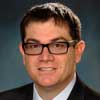 Seth Kligerman, MD (pictured), assistant professor, and Charles White, MD, professor, both from the Department of Diagnostic Radiology & Nuclear Medicine, were among the co-authors on “The Effect of Computer-Aided Detection on Radiologist Performance in the Detection of Lung Cancers Previously Missed on a Chest Radiograph” in the Journal of Thoracic Imaging, 2012 Oct 10 [Epub ahead of print].
Seth Kligerman, MD (pictured), assistant professor, and Charles White, MD, professor, both from the Department of Diagnostic Radiology & Nuclear Medicine, were among the co-authors on “The Effect of Computer-Aided Detection on Radiologist Performance in the Detection of Lung Cancers Previously Missed on a Chest Radiograph” in the Journal of Thoracic Imaging, 2012 Oct 10 [Epub ahead of print].
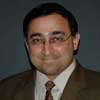 Benjamin Lawner, DO, EMT-P, assistant professor, and Amal Mattu, MD (pictured), professor, both from the Department of Emergency Medicine, were co-editors of Avoiding Common Pre-hospital Errors, published by Lippincott Williams & Wilkins in September. The book describes 138 errors that can occur in pre-hospital medicine and presents tips on how to minimize their occurrence. Department colleagues Wade Gaasch, MD, assistant professor, and Cynthia Shen, DO, clinical assistant professor, were associate editors for the project. Roger Stone, MD, MS, FACEP, FAAEM, clinical assistant professor, contributed chapters on helicopter transport and customer service.
Benjamin Lawner, DO, EMT-P, assistant professor, and Amal Mattu, MD (pictured), professor, both from the Department of Emergency Medicine, were co-editors of Avoiding Common Pre-hospital Errors, published by Lippincott Williams & Wilkins in September. The book describes 138 errors that can occur in pre-hospital medicine and presents tips on how to minimize their occurrence. Department colleagues Wade Gaasch, MD, assistant professor, and Cynthia Shen, DO, clinical assistant professor, were associate editors for the project. Roger Stone, MD, MS, FACEP, FAAEM, clinical assistant professor, contributed chapters on helicopter transport and customer service.
 Richard Lichenstein, MD, professor, Department of Pediatrics was among the co-authors for the Pediatric Emergency Care Applied Research Network on “Reported Medication Events in a Pediatric Emergency Research: Sharing to Improve Patient Safety” in the Emergency Medicine Journal, 2012 Oct 31 [Epub ahead of print].
Richard Lichenstein, MD, professor, Department of Pediatrics was among the co-authors for the Pediatric Emergency Care Applied Research Network on “Reported Medication Events in a Pediatric Emergency Research: Sharing to Improve Patient Safety” in the Emergency Medicine Journal, 2012 Oct 31 [Epub ahead of print].
 Erik Lillehoj, PhD, associate professor; Wei Guang, MD, PhD, research associate; Hua Ding, PhD, research associate; Thomas Blanchard, PhD, associate professor; and Steven Czinn, MD (pictured), professor and chair, all from the Department of Pediatrics, were among the co-authors on “Helicobacter pylori and Gastric Inflammation: Role of MUC1 Mucin” in the Journal of Pediatric Biochemistry, 2012;(2)3:125-132.
Erik Lillehoj, PhD, associate professor; Wei Guang, MD, PhD, research associate; Hua Ding, PhD, research associate; Thomas Blanchard, PhD, associate professor; and Steven Czinn, MD (pictured), professor and chair, all from the Department of Pediatrics, were among the co-authors on “Helicobacter pylori and Gastric Inflammation: Role of MUC1 Mucin” in the Journal of Pediatric Biochemistry, 2012;(2)3:125-132.
 Philip Mackowiak, MD, MBA, professor & vice-chair, Department of Medicine, published “Charmed with a Name,” the inaugural article in the new series “What’s Up Doc?” in the American Journal of Medical Science, 2012 Oct;344(4):258-60.
Philip Mackowiak, MD, MBA, professor & vice-chair, Department of Medicine, published “Charmed with a Name,” the inaugural article in the new series “What’s Up Doc?” in the American Journal of Medical Science, 2012 Oct;344(4):258-60.
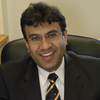 Amal Mattu, MD, professor, Department of Emergency Medicine, and Mandeep Mehra, MBBS (pictured), clinical professor, Department of Medicine, served as guest editors for the November 2012 issue of Cardiology Clinics, published by Elsevier. The following faculty members from the Department of Medicine contributed articles to this issue: Roberto Michael Benitez, MD, professor; Stephen Gottlieb, MD, professor; Anuj Gupta, MD, assistant professor; Miriam Jacob, MD, assistant professor; Wallace Johnson, MD, assistant professor; Anastasios Saliaris, MB BCh BAO, assistant professor; Vincent See, MD, assistant professor; Mukta Srivastava, MD, assistant professor; and Mark Vesely, MD, assistant professor. Articles were also written by cardiology fellows Hiroko Beck, MD; Jeremy Bock, MD (also an assistant instructor); Tapan Godiwala, MD; Ayman Hussein, MD; Thomas Klein, MD; and Neville Mistry, MD, and by residents My-Le Nguyen, MD, and Ronak Patel, MD. Contributors from the Department of Emergency Medicine were Benjamin Lawner, DO, EMT-P, assistant professor; J.V. Nable, MD, clinical instructor; Semhar Tewelde, MD, clinical instructor; and Michael Winters, MD, associate professor.
Amal Mattu, MD, professor, Department of Emergency Medicine, and Mandeep Mehra, MBBS (pictured), clinical professor, Department of Medicine, served as guest editors for the November 2012 issue of Cardiology Clinics, published by Elsevier. The following faculty members from the Department of Medicine contributed articles to this issue: Roberto Michael Benitez, MD, professor; Stephen Gottlieb, MD, professor; Anuj Gupta, MD, assistant professor; Miriam Jacob, MD, assistant professor; Wallace Johnson, MD, assistant professor; Anastasios Saliaris, MB BCh BAO, assistant professor; Vincent See, MD, assistant professor; Mukta Srivastava, MD, assistant professor; and Mark Vesely, MD, assistant professor. Articles were also written by cardiology fellows Hiroko Beck, MD; Jeremy Bock, MD (also an assistant instructor); Tapan Godiwala, MD; Ayman Hussein, MD; Thomas Klein, MD; and Neville Mistry, MD, and by residents My-Le Nguyen, MD, and Ronak Patel, MD. Contributors from the Department of Emergency Medicine were Benjamin Lawner, DO, EMT-P, assistant professor; J.V. Nable, MD, clinical instructor; Semhar Tewelde, MD, clinical instructor; and Michael Winters, MD, associate professor.
 Mary McKenna, PhD, professor, Department of Pediatrics, authored “Substrate Competition Studies Demonstrate Oxidative Metabolism of Glucose, Glutamate, Glutamine, Lactate and 3-Hydroxybutyrate in Cortical Astrocytes from Rat Brain” in Neurochemical Research, 2012 Nov;37(11):2613-26. Dr. McKenna (corresponding author), along with Da Shi, MS, a PhD student in the Biochemistry Program (first author); Su Xu, PhD, assistant professor, Steven Roys, PhD, assistant professor, and Rao Gullapalli, PhD, associate professor, all from the Department of Diagnostic Radiology & Nuclear Medicine; and Susanna Scafidi, MD, former assistant professor, and Jaylyn Waddell, PhD, research associate, both from the Department of Pediatrics, co-authored “Longitudinal In Vivo Developmental Changes of Metabolites in the Hippocampus of Fmr1 Knockout Mice” in the Journal of Neurochemistry, 2012 Dec;123(6):971-81.
Mary McKenna, PhD, professor, Department of Pediatrics, authored “Substrate Competition Studies Demonstrate Oxidative Metabolism of Glucose, Glutamate, Glutamine, Lactate and 3-Hydroxybutyrate in Cortical Astrocytes from Rat Brain” in Neurochemical Research, 2012 Nov;37(11):2613-26. Dr. McKenna (corresponding author), along with Da Shi, MS, a PhD student in the Biochemistry Program (first author); Su Xu, PhD, assistant professor, Steven Roys, PhD, assistant professor, and Rao Gullapalli, PhD, associate professor, all from the Department of Diagnostic Radiology & Nuclear Medicine; and Susanna Scafidi, MD, former assistant professor, and Jaylyn Waddell, PhD, research associate, both from the Department of Pediatrics, co-authored “Longitudinal In Vivo Developmental Changes of Metabolites in the Hippocampus of Fmr1 Knockout Mice” in the Journal of Neurochemistry, 2012 Dec;123(6):971-81.
 Christopher Meenan, research associate and director of Clinical Informatics in the Department of Diagnostic Radiology & Nuclear Medicine, was among the co-authors on “Standards for Business Analytics and Departmental Workflow” in the Journal of Digital Imaging, 2012 Oct 11 [Epub ahead of print].
Christopher Meenan, research associate and director of Clinical Informatics in the Department of Diagnostic Radiology & Nuclear Medicine, was among the co-authors on “Standards for Business Analytics and Departmental Workflow” in the Journal of Digital Imaging, 2012 Oct 11 [Epub ahead of print].
 Elias Melhem, MD, PhD, professor and the John Dennis Chair of the Department of Diagnostic Radiology & Nuclear Medicine, was the senior author on “Contrast-Enhanced Magnetic Resonance Angiography” in Magnetic Resonance Imaging Clinics of North America, 2012 Nov;20:687–698. Dr. Melhem was also among the co-authors on “Imaging of Glutamate Neurotransmitter Alterations in Alzheimer’s Disease” in NMR in Biomedicine, 2012 Oct 9 [Epub ahead of print] and on “GLISTR: Glioma Image Segmentation and Registration” in IEEE Transactions on Medical Imaging, 2012 Oct;31:1941–1954.
Elias Melhem, MD, PhD, professor and the John Dennis Chair of the Department of Diagnostic Radiology & Nuclear Medicine, was the senior author on “Contrast-Enhanced Magnetic Resonance Angiography” in Magnetic Resonance Imaging Clinics of North America, 2012 Nov;20:687–698. Dr. Melhem was also among the co-authors on “Imaging of Glutamate Neurotransmitter Alterations in Alzheimer’s Disease” in NMR in Biomedicine, 2012 Oct 9 [Epub ahead of print] and on “GLISTR: Glioma Image Segmentation and Registration” in IEEE Transactions on Medical Imaging, 2012 Oct;31:1941–1954.
 Reuben Mezrich, MD, PhD, professor, Department of Diagnostic Radiology & Nuclear Medicine, was among the co-authors on “Unbiased Review of Digital Diagnostic Images in Practice: Informatics Prototype and Pilot Study” in Academic Radiology, 2012 Oct 26 [Epub ahead of print].
Reuben Mezrich, MD, PhD, professor, Department of Diagnostic Radiology & Nuclear Medicine, was among the co-authors on “Unbiased Review of Digital Diagnostic Images in Practice: Informatics Prototype and Pilot Study” in Academic Radiology, 2012 Oct 26 [Epub ahead of print].
 Stuart Mirvis, MD, and Kathirkama Shanmuganathan, MD, both professors in the Department of Diagnostic Radiology & Nuclear Medicine, were among the co-authors on “Predictors of Pulmonary Complications in Blunt Traumatic Spinal Cord Injury” in the Journal of Neurosurgery: Spine, 2012 Sep;17:38–45. They were also among the co-authors on “Intermedullary Lesion Expansion on Magnetic Resonance Imaging in Patients with Motor Complete Cervical Spinal Cord Injury” in the Journal of Neurosurgery: Spine, 2012 Sep;17:243-250.
Stuart Mirvis, MD, and Kathirkama Shanmuganathan, MD, both professors in the Department of Diagnostic Radiology & Nuclear Medicine, were among the co-authors on “Predictors of Pulmonary Complications in Blunt Traumatic Spinal Cord Injury” in the Journal of Neurosurgery: Spine, 2012 Sep;17:38–45. They were also among the co-authors on “Intermedullary Lesion Expansion on Magnetic Resonance Imaging in Patients with Motor Complete Cervical Spinal Cord Injury” in the Journal of Neurosurgery: Spine, 2012 Sep;17:243-250.
 Jean-Pierre Raufman, MD (pictured), professor; Guofeng Xie, MBBS, PhD, assistant professor; and Zhongsheng Peng, MD, PhD, research laboratory specialist, all from the Department of Medicine, were among the co-authors on “Src-Mediated Cross-Talk Between Farnesoid X and Epidermal Growth Factor Receptors Inhibits Human Intestinal Cell Proliferation and Tumorigenesis” in PLoS One, 2012 Oct 31;7(10):e48461 [Epub ahead of print].
Jean-Pierre Raufman, MD (pictured), professor; Guofeng Xie, MBBS, PhD, assistant professor; and Zhongsheng Peng, MD, PhD, research laboratory specialist, all from the Department of Medicine, were among the co-authors on “Src-Mediated Cross-Talk Between Farnesoid X and Epidermal Growth Factor Receptors Inhibits Human Intestinal Cell Proliferation and Tumorigenesis” in PLoS One, 2012 Oct 31;7(10):e48461 [Epub ahead of print].
 Charles Resnik, MD, professor, Department of Diagnostic Radiology & Nuclear Medicine, was among the co-authors on “Resident Clinical Duties While Preparing for the ABR Core Examination: Position Statement of the Association of Program Directors in Radiology” in the Journal of the American College of Radiology, 2012 Nov;9:832–834.
Charles Resnik, MD, professor, Department of Diagnostic Radiology & Nuclear Medicine, was among the co-authors on “Resident Clinical Duties While Preparing for the ABR Core Examination: Position Statement of the Association of Program Directors in Radiology” in the Journal of the American College of Radiology, 2012 Nov;9:832–834.
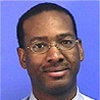 Howard Richard, III, MD (pictured), and Bertrand Janne dOthee, MD, MPH, both associate professors, Department of Diagnostic Radiology & Nuclear Medicine, were among the authors of “Real-Time MR Imaging Guidance for Percutaneous Core Biopsy of US- and CT-Negative Lesions” in the Journal of Vascular and Interventional Radiology, 2012 Nov;23:1539–1542.
Howard Richard, III, MD (pictured), and Bertrand Janne dOthee, MD, MPH, both associate professors, Department of Diagnostic Radiology & Nuclear Medicine, were among the authors of “Real-Time MR Imaging Guidance for Percutaneous Core Biopsy of US- and CT-Negative Lesions” in the Journal of Vascular and Interventional Radiology, 2012 Nov;23:1539–1542.
 Philip Roman, MD, MPH, assistant professor, and Alina Grigore, MD (pictured), associate professor, both from the Department of Anesthesiology, were co-authors on “Pro: Hypothermic Cardiopulmonary Bypass Should be Used Routinely” in the Journal of Cardiothoracic and Vascular Anesthesiology, 2012 Oct;26(5):945-8.
Philip Roman, MD, MPH, assistant professor, and Alina Grigore, MD (pictured), associate professor, both from the Department of Anesthesiology, were co-authors on “Pro: Hypothermic Cardiopulmonary Bypass Should be Used Routinely” in the Journal of Cardiothoracic and Vascular Anesthesiology, 2012 Oct;26(5):945-8.
 Eliot Siegel, MD, professor, Department of Diagnostic Radiology & Nuclear Medicine, was among the co-authors on “Interactive Relations of Blood Pressure and Age to Subclinical Cerebrovascular Disease” in the Journal of Hypertension, 2012 Oct 26 [Epub ahead of print]. He was also among the co-authors on “ACR–AAPM–SIIM Practice Guideline for Determinants of Image Quality in Digital Mammography” in the Journal of Digital Imaging, 2012 Sep 20 [Epub ahead of print].
Eliot Siegel, MD, professor, Department of Diagnostic Radiology & Nuclear Medicine, was among the co-authors on “Interactive Relations of Blood Pressure and Age to Subclinical Cerebrovascular Disease” in the Journal of Hypertension, 2012 Oct 26 [Epub ahead of print]. He was also among the co-authors on “ACR–AAPM–SIIM Practice Guideline for Determinants of Image Quality in Digital Mammography” in the Journal of Digital Imaging, 2012 Sep 20 [Epub ahead of print].
 Clint Sliker, MD, and Krystal Archer-Arroyo, MD (pictured), both assistant professors in the Department of Diagnostic Radiology & Nuclear Medicine, were among the co-authors of a two-part article on “Emergency Radiology Eponyms” in Emergency Radiology, 2012 Oct 12 [Epub ahead of print]. Part 1 covered “Pott’s Puffy Tumor to Kerley B Lines,” and Part 2 covered “Naclerio’s V Sign to Fournier Gangrene.” Dr. Sliker and Barry Daly, MD, professor, were among the co-authors on “Comparison of Whole-Body Post Mortem 3D CT and Autopsy Evaluation in Accidental Blunt Force Traumatic Death Using the Abbreviated Injury Scale Classification” in Forensic Science International, 2012 Sep [Epub ahead of print]. Dr Daly was also among the co-authors on “An Anatomically Comprehensive Atlas of the Adult Human Brain Transcriptome” in Nature, 2012 Sep;489:391–399.
Clint Sliker, MD, and Krystal Archer-Arroyo, MD (pictured), both assistant professors in the Department of Diagnostic Radiology & Nuclear Medicine, were among the co-authors of a two-part article on “Emergency Radiology Eponyms” in Emergency Radiology, 2012 Oct 12 [Epub ahead of print]. Part 1 covered “Pott’s Puffy Tumor to Kerley B Lines,” and Part 2 covered “Naclerio’s V Sign to Fournier Gangrene.” Dr. Sliker and Barry Daly, MD, professor, were among the co-authors on “Comparison of Whole-Body Post Mortem 3D CT and Autopsy Evaluation in Accidental Blunt Force Traumatic Death Using the Abbreviated Injury Scale Classification” in Forensic Science International, 2012 Sep [Epub ahead of print]. Dr Daly was also among the co-authors on “An Anatomically Comprehensive Atlas of the Adult Human Brain Transcriptome” in Nature, 2012 Sep;489:391–399.
 Marcelo Sztein, MD, professor, Department of Pediatrics, and Franklin Toapanta, MD, PhD, research associate, Department of Medicine, both also from the Center for Vaccine Development, were among the co-authors on “Diverse Phosphorylation Patterns of B Cell Receptor-Associated Signaling in Naïve and Memory Human B Cells Revealed by Phosphoflow, A Powerful Technique to Study Signaling at the Single Cell Level” in Frontiers in Cellular and Infection Microbiology, 2012;2:128.
Marcelo Sztein, MD, professor, Department of Pediatrics, and Franklin Toapanta, MD, PhD, research associate, Department of Medicine, both also from the Center for Vaccine Development, were among the co-authors on “Diverse Phosphorylation Patterns of B Cell Receptor-Associated Signaling in Naïve and Memory Human B Cells Revealed by Phosphoflow, A Powerful Technique to Study Signaling at the Single Cell Level” in Frontiers in Cellular and Infection Microbiology, 2012;2:128.
 Loren Thompson, PhD (pictured), associate professor, and Yazan Al-Hasan, PhD, former postdoctoral fellow, Department of Obstetrics, Gynecology & Reproductive Sciences, were co-authors on “Impact of Oxidative Stress in Fetal Programming” in the Journal of Pregnancy, 2012;2012:582748.
Loren Thompson, PhD (pictured), associate professor, and Yazan Al-Hasan, PhD, former postdoctoral fellow, Department of Obstetrics, Gynecology & Reproductive Sciences, were co-authors on “Impact of Oxidative Stress in Fetal Programming” in the Journal of Pregnancy, 2012;2012:582748.
 Charles White, MD, professor, Department of Diagnostic Radiology & Nuclear Medicine, was among the authors on “Carotid Doppler Ultrasonography as a Surrogate for Coronary CT Angiography to Exclude Subclinical Atherosclerosis in Asymptomatic Patients with a Negative Coronary Calcium Score” in the Journal of Clinical Ultrasound, 2012 Oct [Epub ahead of print]. He was also among the co-authors on “ACR Appropriateness Criteria Acute Nonspecific Chest Pain—Low Probability of Coronary Artery Disease” in the Journal of the American College of Radiology, 2012 Oct;9:745–750; and on “A Case of a Patient with Protein C Deficiency Presenting with Concurrent Thromboses in the Pulmonary Arteries and Innominate Artery: A Suggestive Computed Tomographic Finding of Thrombophilia” in the Journal of Thoracic Imaging, 2012 Nov;27:W180–W181. Dr. White and radiology fellow Jason Lempel, MD, were among the co-authors on “Aortopulmonary Fistula in Acute Dissection: Findings at Unenhanced and Enhanced Computed Tomographic Imaging” in the Journal of Thoracic Imaging, 2012 Nov;27:W168–W170.
Charles White, MD, professor, Department of Diagnostic Radiology & Nuclear Medicine, was among the authors on “Carotid Doppler Ultrasonography as a Surrogate for Coronary CT Angiography to Exclude Subclinical Atherosclerosis in Asymptomatic Patients with a Negative Coronary Calcium Score” in the Journal of Clinical Ultrasound, 2012 Oct [Epub ahead of print]. He was also among the co-authors on “ACR Appropriateness Criteria Acute Nonspecific Chest Pain—Low Probability of Coronary Artery Disease” in the Journal of the American College of Radiology, 2012 Oct;9:745–750; and on “A Case of a Patient with Protein C Deficiency Presenting with Concurrent Thromboses in the Pulmonary Arteries and Innominate Artery: A Suggestive Computed Tomographic Finding of Thrombophilia” in the Journal of Thoracic Imaging, 2012 Nov;27:W180–W181. Dr. White and radiology fellow Jason Lempel, MD, were among the co-authors on “Aortopulmonary Fistula in Acute Dissection: Findings at Unenhanced and Enhanced Computed Tomographic Imaging” in the Journal of Thoracic Imaging, 2012 Nov;27:W168–W170.


